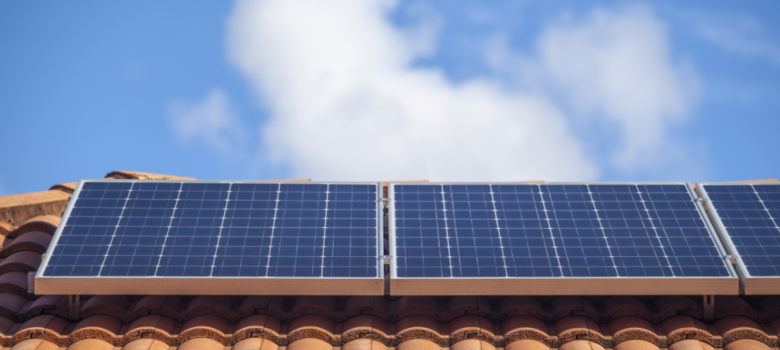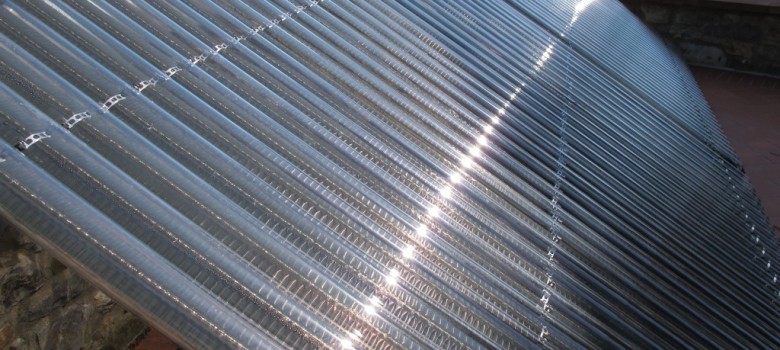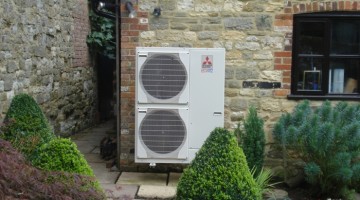
It is easy to be short-sighted when building homes. Many developers are out to maximise profits, and they fail to see the benefit for them in adding costs by installing energy saving technologies. In this blog, we want to show why drawing low carbon technologies into plans is a good idea for the builder as well as the future tenant/homeowner.
The benefits to tenants/homeowners are fairly obvious: lower bills, a more comfortable home and the knowledge that they are reducing their carbon footprint. What many builders/developers don’t realise is that installing these measures can be worthwhile for them too.
Benefits for developers choosing to install energy saving technologies
- Prospective tenants/buyers could be keener to rent/buy if they know their bills will be cheaper and their home more efficient. We are hearing that more and more people are checking EPC ratings before moving – so renewable energy technologies could be a real incentive for some.
- Financial reward. In retrofit projects, whoever installs these improvements will be eligible for government payments through the FiT and the RHI, If the developer is the one paying for the system in the first place, they will be the one who benefits in this way.
- A finish to be proud of! Under the Code for Sustainable Homes, it’s best practice for builders to build energy efficient properties. Modern, energy efficient measures can put a property ahead of the rest. Although the zero carbon homes policy was (unfortunately) scrapped, its standards should still be seen as a goal for any potential developer, when looking at the energy efficiency of a home.
- It’s the ethical choice! The more energy can be saved, and the more renewable energy generated, the lower the impact on the planet.
Our recommendations
There are loads of options when it comes to installing energy saving technologies, and lots of things to consider. It goes without saying that not every measure will be suitable for every property; aside from limits placed depending on the type of building, some technologies involve maintenance from the tenant, which they may not want. Here, we have picked a few examples of popular renewable/low carbon technologies, to give an idea of their potential plus points.
SOLAR PV
Solar PV panels capture energy from sunlight and transform it into electricity. They are installed discreetly on the roof, and they require minimal maintenance.
- A solar PV system installed on an average system can potentially produce 3-4,000kWhs of electricity per year.
- The average price of electricity is £0.125 per kWh; therefore the system can save approximately £375-£500 per annum, if the electricity is consumed onsite – without any energy price rises built in.
- Current installation cost is £5,500 to £6,500 (single dwelling one-off cost) for an average sized home. E.g. a 3.5-4.0kWp system using 12 to 16 solar panels on the roof.
- FiT can be claimed by the installer.
- Economies of scale when installing on more than one home.
GROUND SOURCE HEAT PUMP WITH DISTRICT HEATING ARRAY
A ground source heat pump takes heat from the ground and boosts it to a temperature that can be used domestically. A big enough system can be connected to more than one dwelling.
- A ground source heat pump (GSHP) can produce all of the heating and hot water demand for a well-insulated dwelling.
- A GSHP has a reasonable life expectancy of 15-25 years.
- Multiple dwellings can be connected using a district heating array, thereby making the investment eligible for the non-domestic RHI subsidy – this is paid over 20 years for the heating generated.
SOLAR THERMAL
Solar thermal is another (perhaps less attractive) option. It can provide some of a household’s hot water.
- Can be easily incorporated into the roof space if looked at with design and build of the properties. i.e. the roof has to be put on anyway and you need scaffolding to do so.
- Easy to install a dual-feed tank for the solar thermal.
- Works really well in the spring/summer.
- Cost of £3,000 to £3,500 per system on an individual property. Installation cost could come down with volume, but less likely vs. solar PV, where size of installation leads to benefits from scale economies.
- Can save £50-£100 water heating bill for an average family.
However:
- Doesn’t provide all the hot water demand, as technology not very effective in winter months.
- Investor/landlord that pays for it does not benefit from the RHI, unless it is a commercial project.
As mentioned, there are lots of reasons to consider energy efficiency when building or retrofitting homes. We have shown why, aside from being a great choice for homeowners, renewable energy generation technologies can also pay off for the people installing them.
- The occupier can benefit from free electricity straight away, making the rental on some of the individual dwellings more attractive – particularly the family-sized homes.
- Free electricity is great for the long-term as it mitigates some of the expected energy price rises expected in the future (note: energy prices doubled between 2007 and 2013).
- The builder/investor/ landlord can get some return back (not all of it to pay back for the system) via the FiT generation tariff and the FiT export tariff. If the landlord bought/installed the system, and is responsible for ongoing servicing commitments, then the landlord gets the payments. At the moment, the landlord gets the same export payments (50% of generation) whether or not the tenants are using any of the energy generated – but if export meters are introduced, it will obviously affect this.
If you’re thinking of ways to factor in energy efficiency during the planning process, get in touch – we can help!
Installing Solar PV
Are you thinking about installing a solar PV system at home? We have scoured the country for the best tradespeople, so that we can make sure we only recommend those we really trust.
If you would like us to find you a local installer to help install a solar PV system in your home, just fill in the form below and we will be in touch shortly!
Think we missed something? Do you have a different opinion?
Comment below to get your voice heard…














We installed PV panels in two of our properties. The cost per each system was £6,200.00 supplied and fitted. Within a 12 month period, the FIT payment made to us by British Gas was £632.00. Our entire approach, since the installation has changed. For example, we try and use our appliances (one at a time!) in the early afternoon and this has led to a 2/3 reduction in our Kwh consumption. All good savings. But, this approach will only work if everyone in the house hold takes on board what is actually required to save energy and ultimately money.